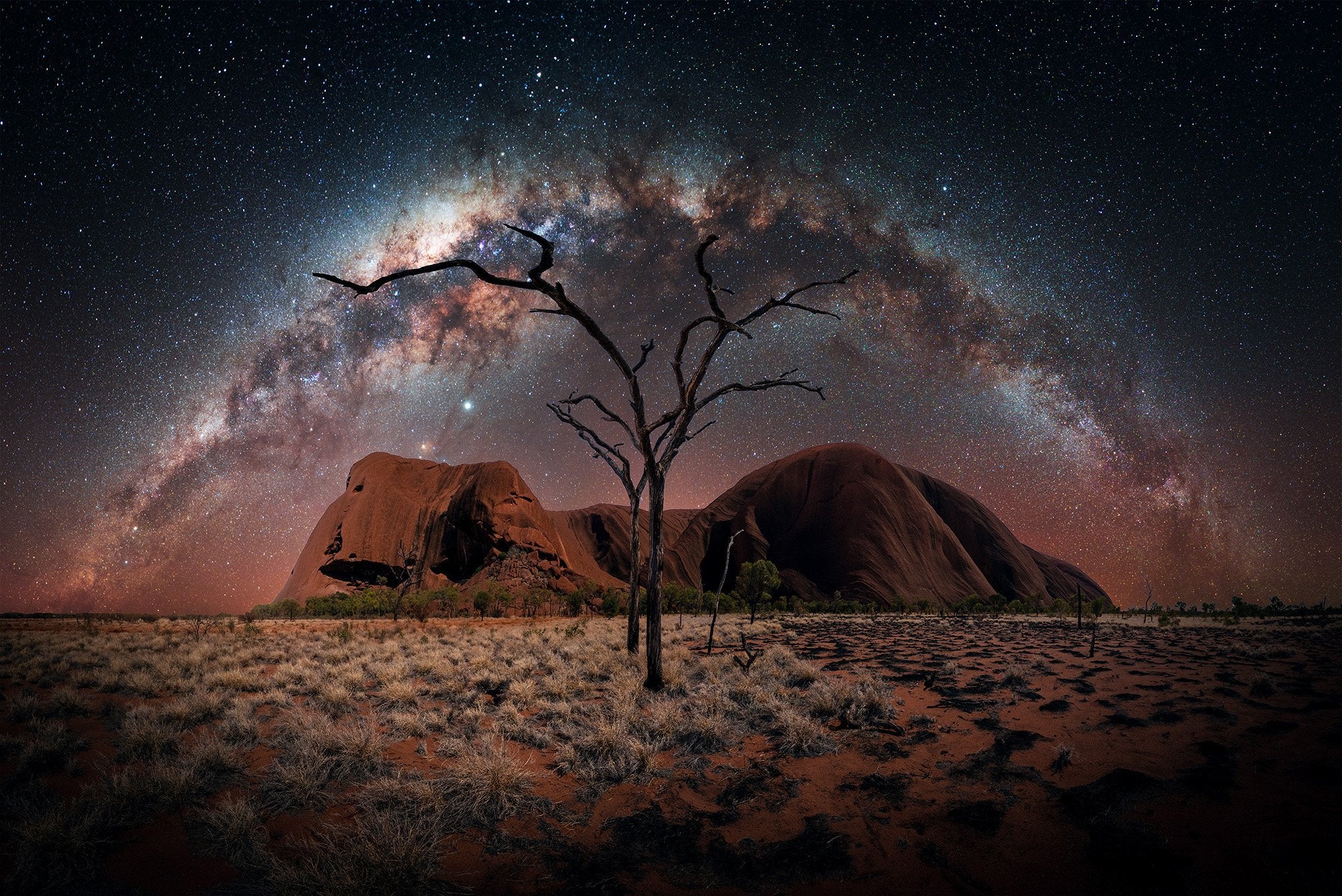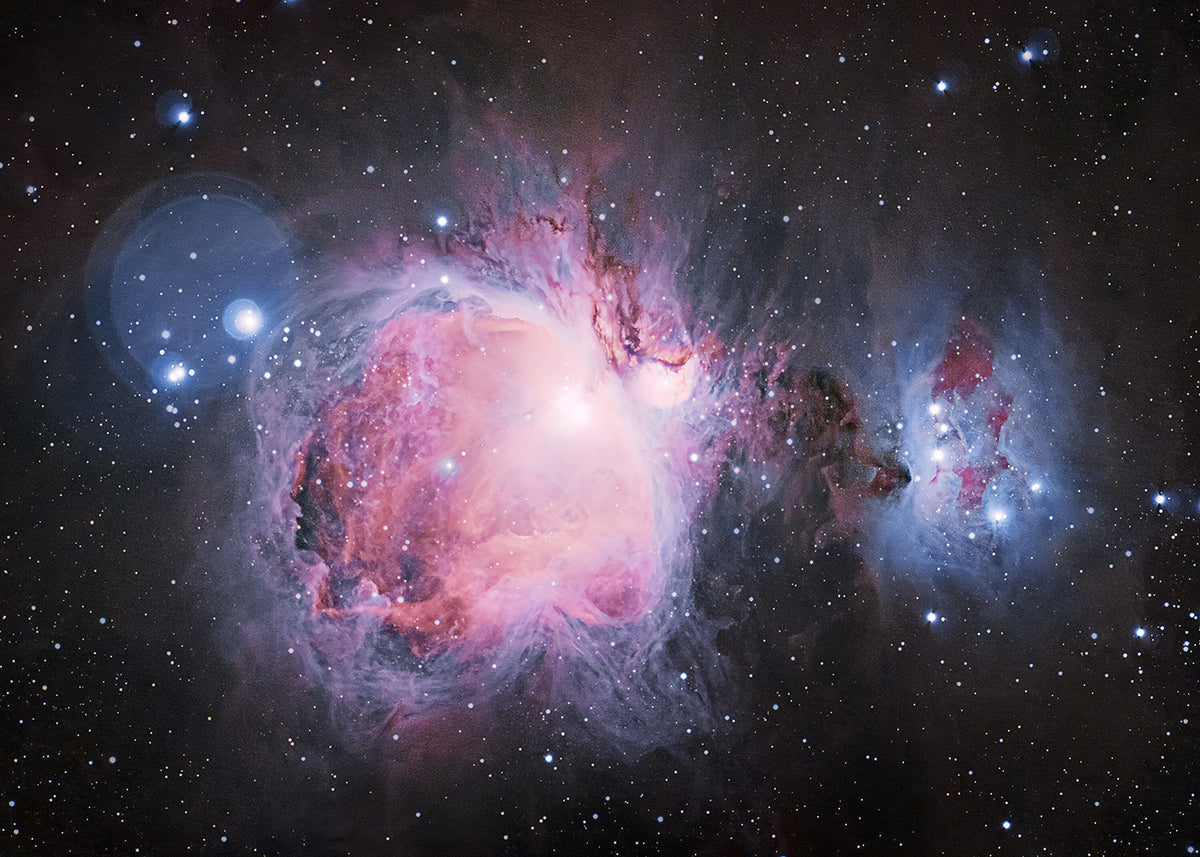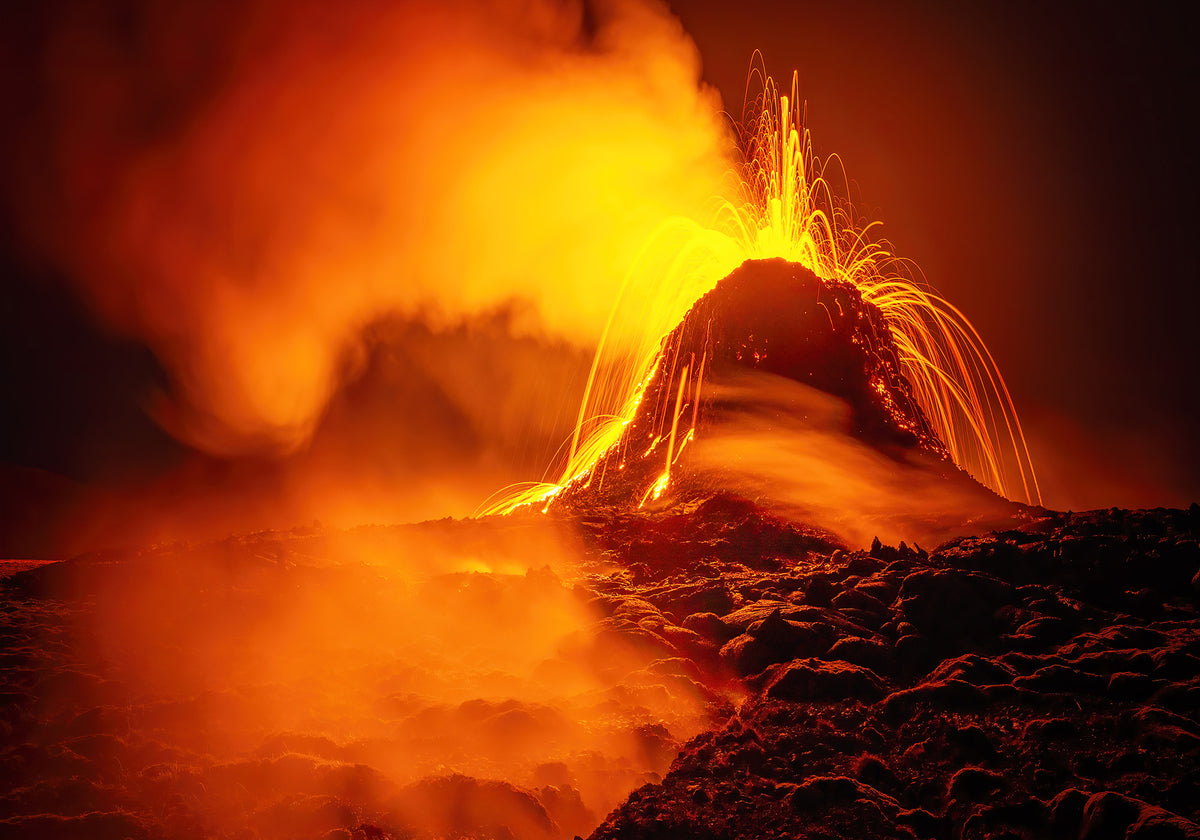
Astrophotography in Western and Central Australia
I went to Western and Central Australia in September to capture one of the most impressive starry skies on earth. After the seemingly endless flight, we took off in Perth, heading straight north to Kalbarri National Park, about 500 km away.
In order to flexibly overcome the long distances and often deserted areas, we decided on a 4×4 off-road vehicle with roof tent construction. So we were able to master dirt roads and spend the night in the most remote places.
In the Kalbarri National Park we looked for the famous Nature's Window, a small rock arch, as an interesting foreground. We also illuminated this with the help of a person inside the arch. Above it, we placed an impressively visible Milky Way. We recorded these by means of a star tracking, which allows long exposure times (> 1 min) and thus low ISO values. A fast 14mm lens helped us with this.

Due to the wide aperture of F1.8, we get short exposure times and thus minimal rotation of the stars. As a result, a panorama consisting of several consecutive shots during the night is possible without any problems. Here you can see our Milky Way in the form of an arc over interesting rock formations in the Kalbarri National Park, taken in a panorama made up of 13 individual images. 

After two impressive starry nights, we continued our journey towards Karijini National Park. On the way we drove along the entire Coral Coast, past the azure ocean with soft pink shimmering coral reefs. We decided to take in the wild roaring sea together with the Milky Way. A zoom lens was used for this. The zoom with a wide open aperture at the same time opens up completely new design possibilities. This makes it easy to take a wide-angle foreground at 14mm and the Milky Way at 20mm and combine it into one image afterwards.
The next destination was Carnavon, on the west coast, and the OTC satellite station at Carnavon was set up to meet the need for more reliable and high-quality communications for NASA's Apollo moon project.
It wasn't easy to get this shot. Usually, the station is surrounded by a large fence and illuminated by bright spotlights. Luckily, we met the friendly manager who opened the door for us. We turned off the lights on the outside and turned it on inside. So now you can see the newborn space engineer Riccardo in front of his station, looking for new life in the space of our Milky Way galaxy! Thank you to the Carnavon Space and Technology Museum.

At night, we had to cleverly illuminate the foreground with our headlamps, as it was completely in the dark due to the lack of ambient light. This absolute darkness offered an incredible view of the starry sky of the southern hemisphere and an F2.8 aperture was more than enough to capture the center of the Milky Way. With the help of the zoom, it was possible to search for motifs more flexibly. The photograph shows the Hamersley Gorge with its abstract rock layers and harmoniously curved shapes during the night. The Milky Way towers.

After a terrific stay, we continued on a 2000 km long tour across the outback. Starting with burst tires, a broken turbo and radiator, we had extreme problems with our car on the way and we were on the verge of abandoning the tour. It is therefore urgently necessary to have enough spare parts and a car specialist with you in the outback. Finally, after a few desperate days, we reached Australia's landmark, Uluru (Ayers Rock).
I decided to photograph the Milky Way together with these gigantic monoliths in a panorama. I used the waxing moon to illuminate the foreground sufficiently. Later, after the moonset, I exposed the Milky Way. The 14mm lens was also the best choice here.

Afterwards we went on the return journey. What remains are memories of a continent with unique nature and landscape.
So if you love an incredibly impressive starry sky paired with fascinating landscapes and nature far away from any civilization, Western and Central Australia is definitely worth a trip.
Thank you Riccardo and Steve for the awesome trip :)
1 Reply
Konrad Schedlbauer
Hi Steve
First of it, the astro pics in this article are brilliant, but I am sure that is a regular comment of visitors.
I do have a few burning questions regarding 2 of your pictures which are #2 and the last one.
I live in Perth/WA and know the locations these photos have been shot. I have done quite a number of milky way shots, but I am only scratching the surface of it. I do know that most astrophotos are the result of a stacking process. I haven't gone down that way yet as my Olympus OMD EM1 MK3 & 7-14 wide lens give me pretty decent results without fiddling on a PC.
Stacking multiple images and overlaying and compositing different views is another matter. So what I would like to know is how the 2 aforementioned photos came about. Looking at the milky way arch and the foreground I would say the angles don't add up. it could never be viewed like this in real life. Only explanation to me is that the milky way arch is a stacked image and the foreground is a separate exposure and the 2 have been combined. There are lots of astro photos like this on the net and at first it made me envious as I could not even imagine how to achieve this result in one shot. Recent research has led me to believe that many of these pictures are the result of compositing creativity.
I don't know if you want to let me in on one of your secrets but I try my luck.
Regards
Konrad Schedlbauer
Perth/Western Australia
Leave a Comment
Comments will be approved prior to publication.
View full article

My Recording Technique | Deep Sky

Photography in Iceland: Volcanic Eruption and Northern Lights


Stefan Liebermann
Author